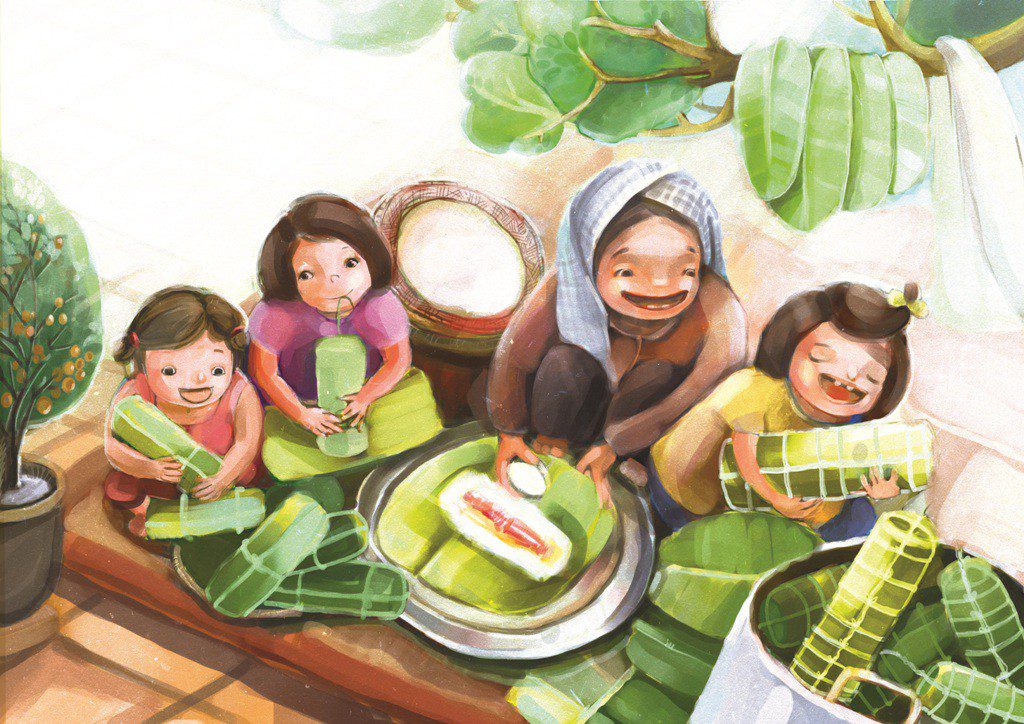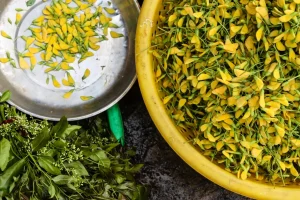For the Vietnamese, one of the joys of Lunar New Year is spending time with family and friends back in their hometowns. And nothing says “comfort” more than the comfort foods associated with Tet.
Some of the special foods relate to Tet traditions, including a beautifully boiled whole chicken that’s placed on the altar to the ancestors before being eaten by the family or sticky rice made intensely orange (a lucky color) with juice from the “gac” fruit, also known as red melon or baby jackfruit.
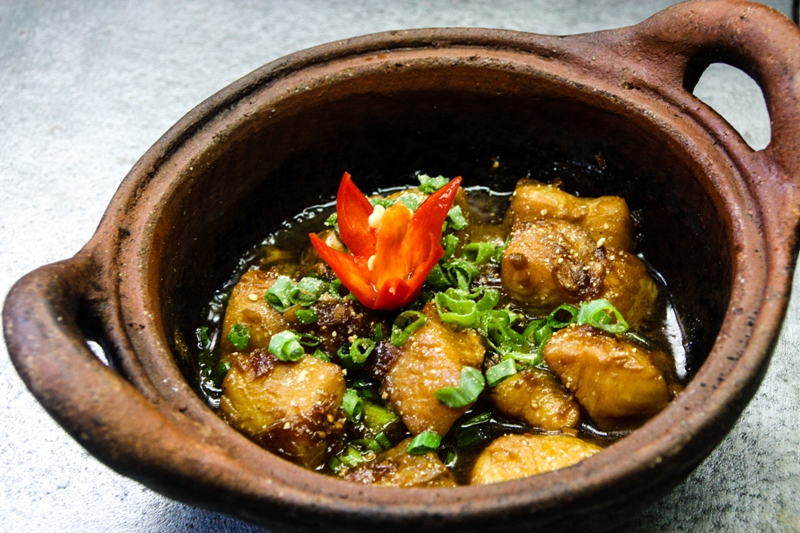
Other foods are meant to ease the frenzy of having lots of people in the house, like caramelized pork and fish. These salty-sweet dishes use palm sugar cooked down to a rich sauce and can keep for a few days without refrigeration, making them ideal for the countryside.
Pickled vegetables help cut the richness of holiday dining, and candied fruit and coconut makes for a sweet ending.
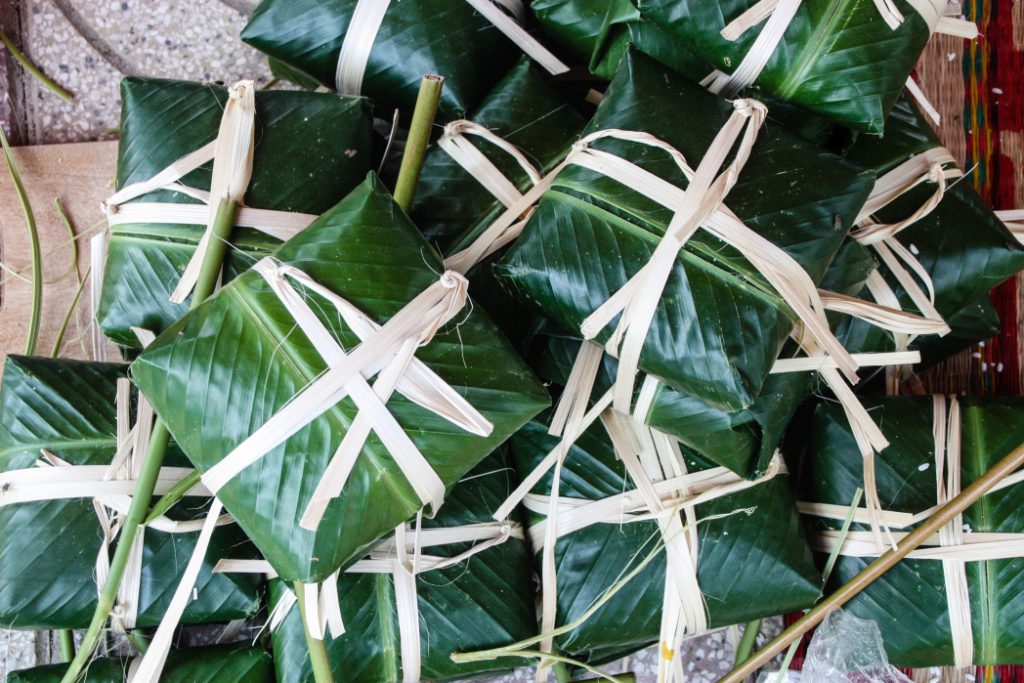
But perhaps the Tet food with the best story behind it is “banh chung”, a square banana leaf wrapped block of glutinous rice, pork and mung beans.
The legend around banh chung centers around Emperor Hung the 6th (c. 1712-1632 BC). To resolve the dilemma of which of his 18 sons should succeed him, he presented them with a food challenge: Whichever prince was able to find the dish that was both delicious and meaningful would inherit the throne.
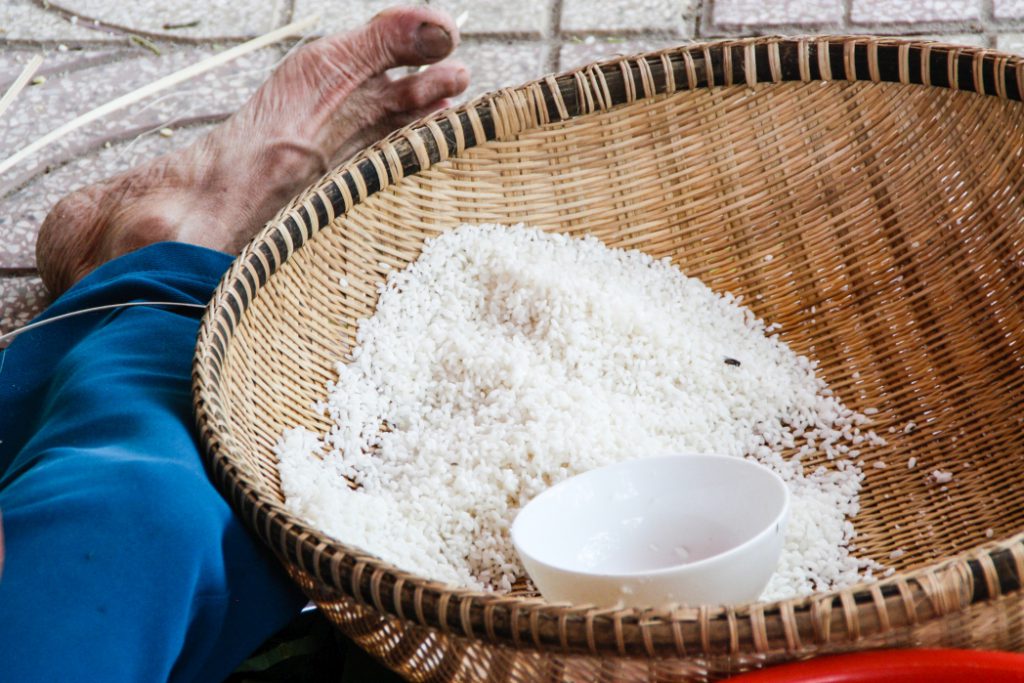
The princes set out to countries far and wide. The youngest prince, Tiet Lieu, instead chose to follow the advice of a fairy who appeared to him in a dream and told him there was nothing more valuable to the people than rice. The fairy instructed him to make two cakes, one square (now known as banh chung) and one round and long (banh tet), representing Heaven and Earth.
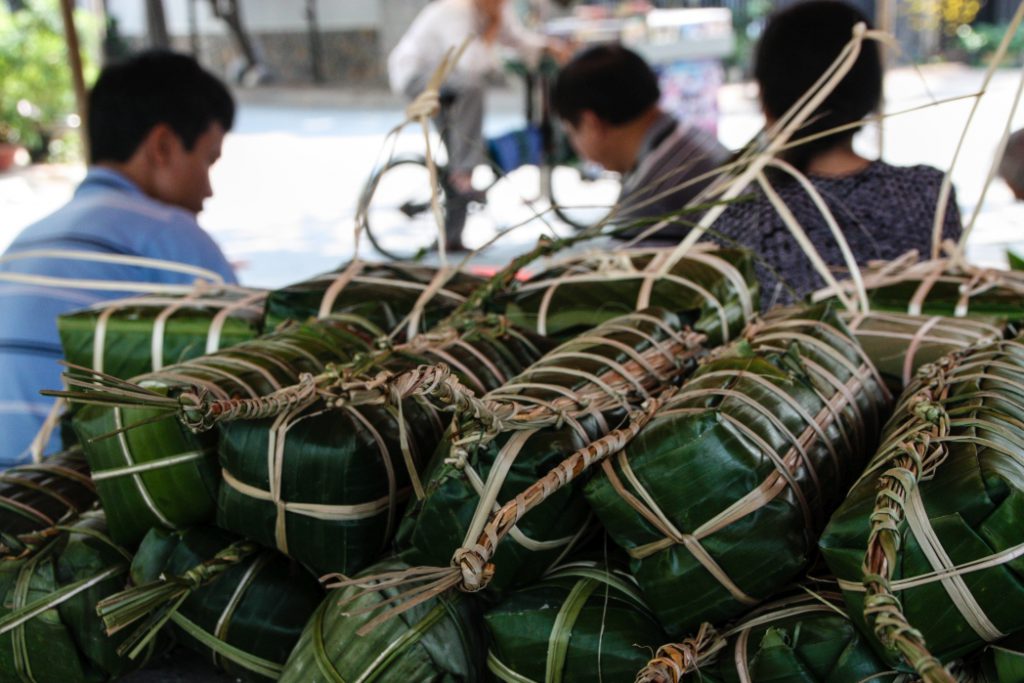
On the appointed day, all the princes came in with amazing foods from across the land. When the Emperor got to Tiet Lieu’s humble cakes, he didn’t know what to make of them. But once he heard the story of the dream and tasted the cakes, he gave the throne to Tiet Lieu. And the rest, as they say, is history.
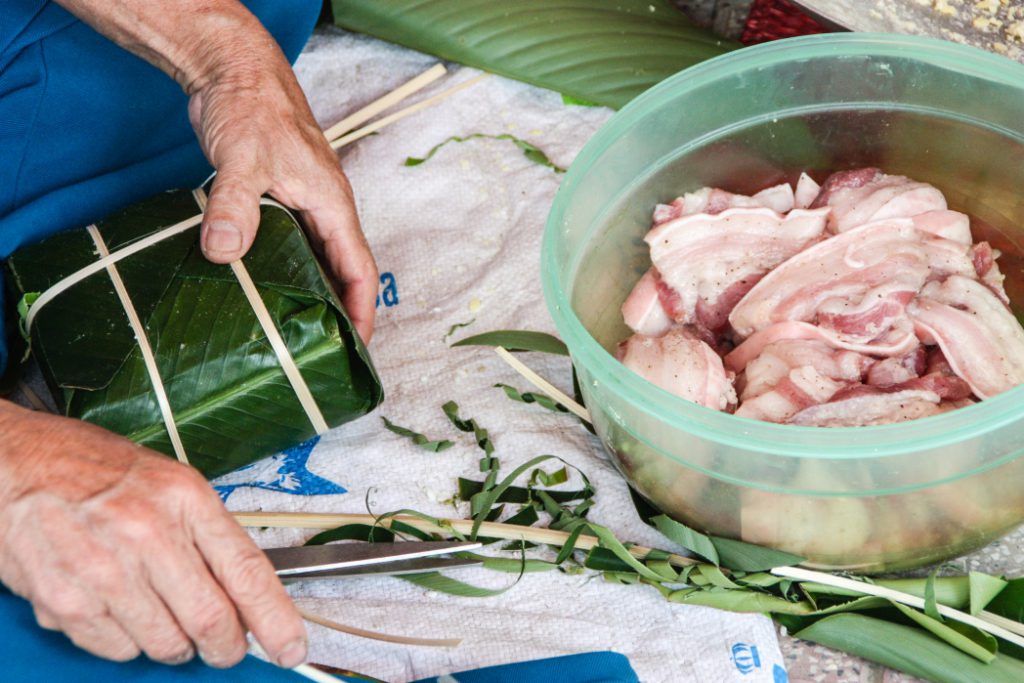
Essentially, banh chung is made from simple ingredients: glutinous rice wrapped around a filling of boiled mung beans, basic seasonings of fish sauce and black pepper, and pork belly, all encased in banana leaves. The cakes are boiled in a vat lined with extra leaves for 10-12 hours and then pressed for another few hours in wooden molds to drain and to maintain their square shape.
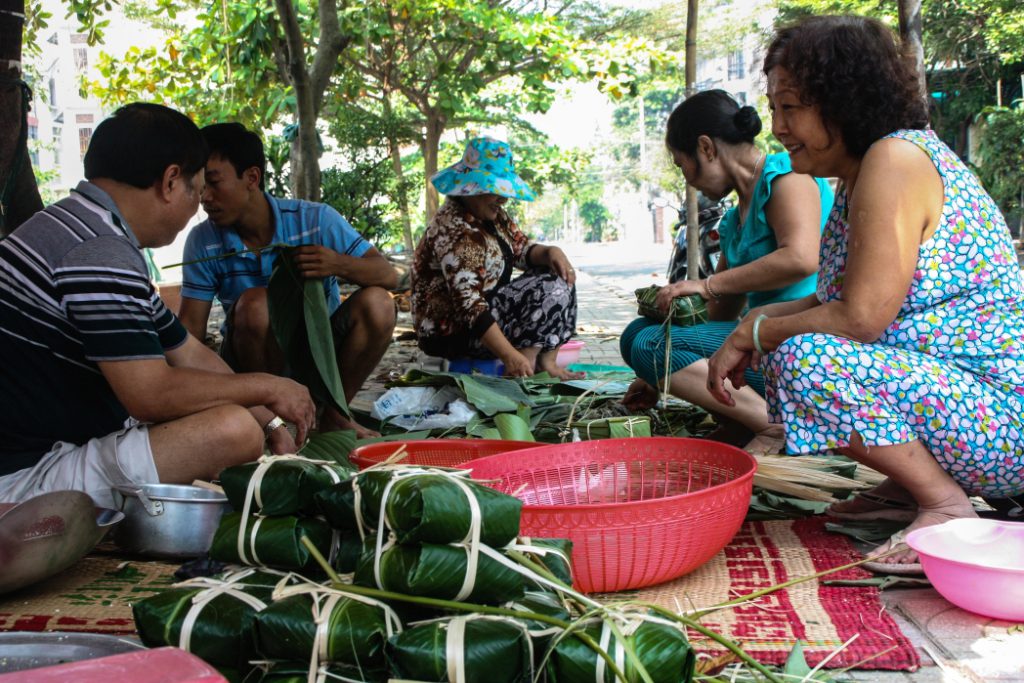
In the days before Lunar New Year, many Vietnamese families gather together to make these sticky rice cakes. Even though they’re relatively simple to make, they’re labor-intensive, requiring many hands to organize the ingredients, put them into a mold and then wrap them tightly in banana leaves.
Then comes the fun part where families stay up the whole night, tending to the cakes as they boil, telling stories and catching up with news.
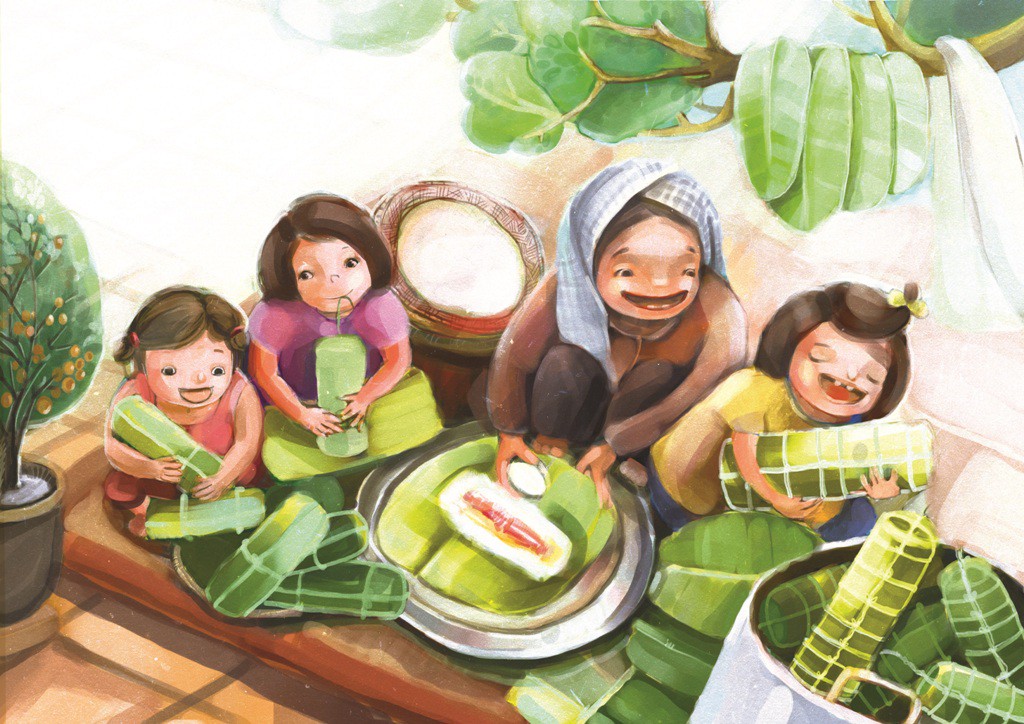
Popular as a breakfast food, banh chung is often paired with something sour to cut through the heaviness of the rice, like kim chee or the more traditional Vietnamese pickled pearl onions perhaps a dash of soy sauce.
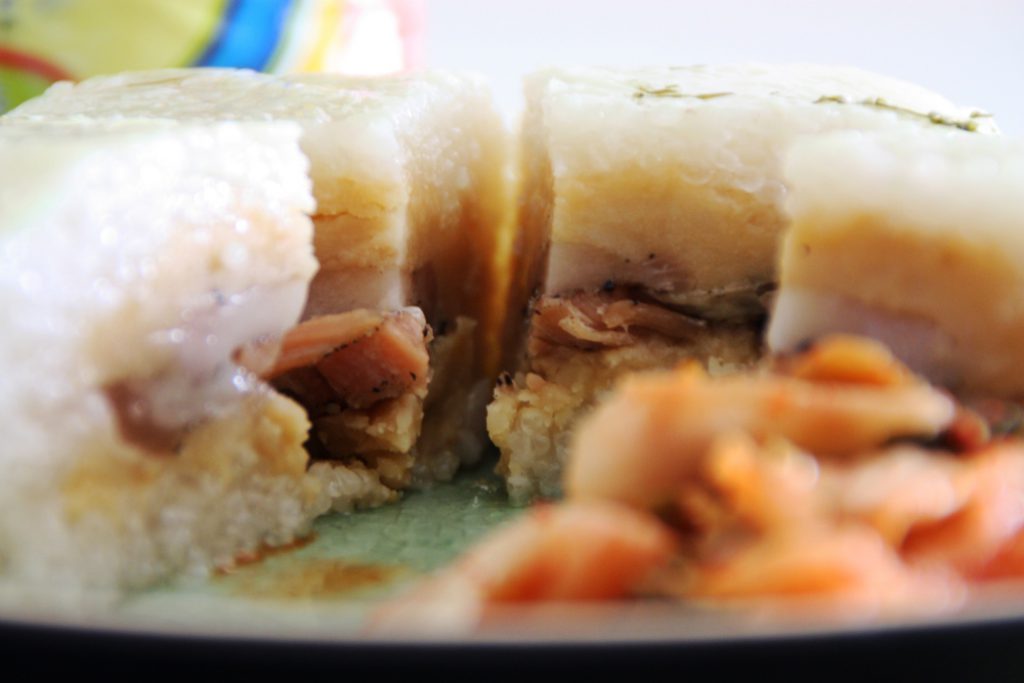
While banh chung are most popular during Lunar New Year with fancier versions including cashews and dried shrimp, they can be enjoyed year-round. Look for steamers set up in corner stores which also sell bread, and also in some of the larger supermarkets.
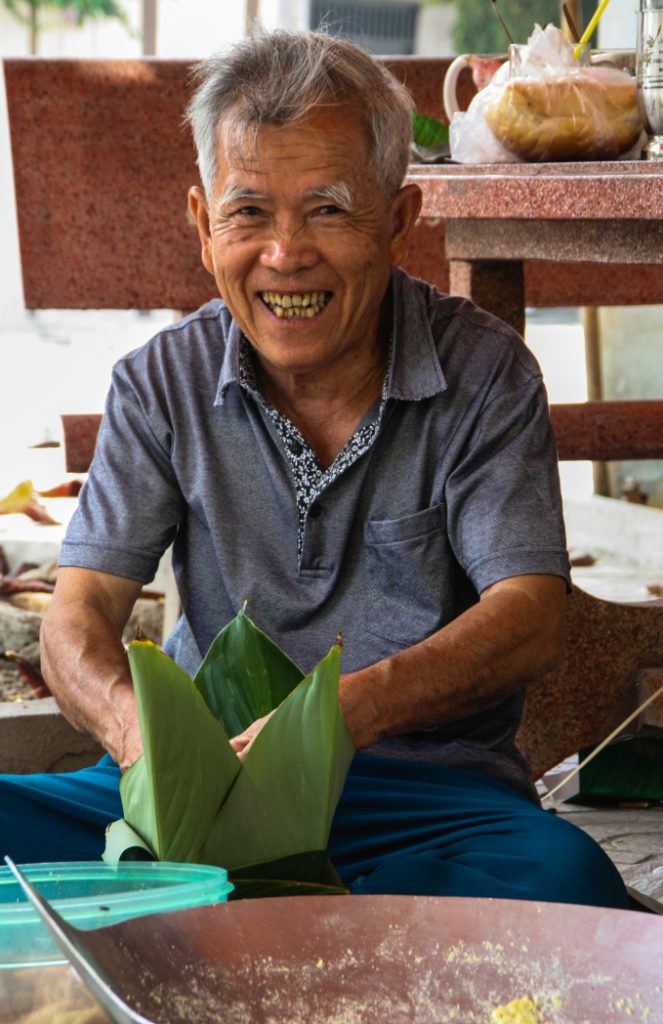
Eating tip: Fully unwrap the cakes and cut them into squares before microwaving or steaming. Another option for banh tet is to cut it into thin slices and pan fry until the edges get crispy.
